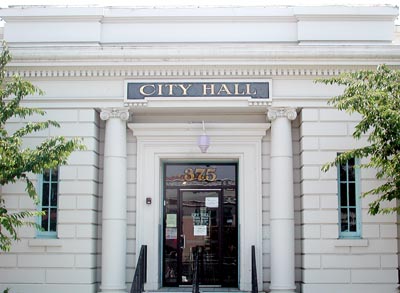As a citizens’ committee continues to look at options for
redrawing Hollister City Council district lines to conform to new
census numbers, council members have decided against holding a
special election in 2011 to ask voters if they would prefer to have
the mayor elected at-large rather than appointed from current
council members.
As a citizens’ committee continues to look at options for redrawing Hollister City Council district lines to conform to new census numbers, council members have decided against holding a special election in 2011 to ask voters if they would prefer to have the mayor elected at-large rather than appointed from current council members.
“The council didn’t want to have a special election in November because of the cost,” said City Attorney Stephanie Atigh, who is also coordinating the redistricting committee. “It could be in 2012, but that will depend on when the state’s primary is. We could piggyback on that ballot and it wouldn’t cost the city as much.”
In a report to the council, Atigh noted that a special election could be held as early as November 2011, which would require the city to adopt a resolution within the next month calling for the election.
“This does not provide a lot of time for the redistricting committee, the city council or the public to review and consider the election issues or the various maps” related to redistricting, she said.
There would be a “considerable difference” in the cost of a city election if it were combined with a state primary or general election, rather than holding a one-issue special election, Atigh said.
Last November, when the city voted on two council seats in conjunction with the state general election, Hollister’s share of the cost was $9,000. When the tax increase Measure T was the only item on the ballot a few years ago, it cost the city $142,000. Piggybacking the at-large mayor and redistricting issues on a state primary or general election in 2012 is expected to cost the city $20,000. Holding a special election could cost more than $150,000, Atigh reported.
Local, state and federal legislative districts are redrawn every 10 years after Census numbers are released. A report by the city’s contracted demographic research company Lapkoff and Gobalet, found that the populations of the five current council districts are unbalanced and in need of adjustment.
In 2010, District 5, represented by Vice Mayor Victor Gomez, was the largest district in the city, with a population of 10,424. By comparison, District 4 had just over 7,400 residents, District 2 was at 6,561, District 1 was just under 6,300 and District 3 had the lowest population at 4,201.
Council populations do not need to be exactly equal, the demographer said, but the general guideline cities should follow is to keep district populations within a 10 percent deviation.
“Significant boundary changes will be required in order to achieve population equality and a deviation of 10 percent or less,” the demographer’s report stated.
The demographer has presented the redistricting committee with three scenarios that meet population equality requirements, including scenarios with four, five and six council districts. The five-district plan would remain in effect if the current election method – council members elected by district, with the mayor elected by council members – were retained. The four- and six-district plans would be used in conjunction with a ballot measure to authorize the at-large election of a mayor.
See the full story in the Pinnacle on Friday.










